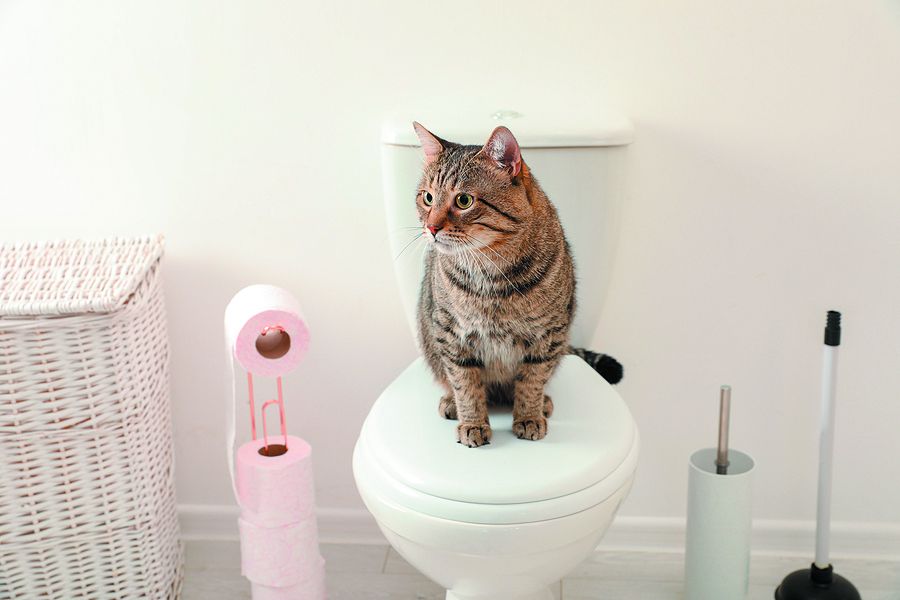Why You Must Never Flush Cat Poop Down Your Toilet - Important Information
Why You Must Never Flush Cat Poop Down Your Toilet - Important Information
Blog Article
They are making several good observations regarding How to Dispose of Cat Poop and Litter Without Plastic Bags overall in the content followed below.

Introduction
As feline owners, it's vital to bear in mind exactly how we take care of our feline buddies' waste. While it may appear hassle-free to flush feline poop down the toilet, this practice can have detrimental effects for both the atmosphere and human health.
Alternatives to Flushing
Luckily, there are much safer and more responsible ways to dispose of feline poop. Think about the adhering to options:
1. Scoop and Dispose in Trash
The most usual method of dealing with feline poop is to scoop it into an eco-friendly bag and toss it in the trash. Be sure to utilize a committed litter scoop and take care of the waste quickly.
2. Use Biodegradable Litter
Select eco-friendly cat litter made from materials such as corn or wheat. These trashes are eco-friendly and can be securely disposed of in the trash.
3. Bury in the Yard
If you have a yard, consider hiding pet cat waste in a marked location far from vegetable gardens and water resources. Make certain to dig deep adequate to stop contamination of groundwater.
4. Mount a Pet Waste Disposal System
Purchase a family pet waste disposal system particularly designed for cat waste. These systems make use of enzymes to break down the waste, decreasing odor and environmental influence.
Health and wellness Risks
Along with ecological problems, flushing feline waste can likewise pose wellness threats to humans. Feline feces might contain Toxoplasma gondii, a parasite that can cause toxoplasmosis-- a potentially extreme disease, particularly for pregnant ladies and individuals with damaged body immune systems.
Environmental Impact
Purging cat poop presents dangerous pathogens and parasites into the supply of water, presenting a considerable danger to water ecological communities. These impurities can adversely influence aquatic life and compromise water quality.
Conclusion
Responsible pet dog possession prolongs beyond providing food and sanctuary-- it likewise includes proper waste monitoring. By avoiding flushing cat poop down the commode and choosing alternative disposal approaches, we can reduce our ecological footprint and shield human health and wellness.
Why Can’t I Flush Cat Poop?
It Spreads a Parasite
Cats are frequently infected with a parasite called toxoplasma gondii. The parasite causes an infection called toxoplasmosis. It is usually harmless to cats. The parasite only uses cat poop as a host for its eggs. Otherwise, the cat’s immune system usually keeps the infection at low enough levels to maintain its own health. But it does not stop the develop of eggs. These eggs are tiny and surprisingly tough. They may survive for a year before they begin to grow. But that’s the problem.
Our wastewater system is not designed to deal with toxoplasmosis eggs. Instead, most eggs will flush from your toilet into sewers and wastewater management plants. After the sewage is treated for many other harmful things in it, it is typically released into local rivers, lakes, or oceans. Here, the toxoplasmosis eggs can find new hosts, including starfish, crabs, otters, and many other wildlife. For many, this is a significant risk to their health. Toxoplasmosis can also end up infecting water sources that are important for agriculture, which means our deer, pigs, and sheep can get infected too.
Is There Risk to Humans?
There can be a risk to human life from flushing cat poop down the toilet. If you do so, the parasites from your cat’s poop can end up in shellfish, game animals, or livestock. If this meat is then served raw or undercooked, the people who eat it can get sick.
In fact, according to the CDC, 40 million people in the United States are infected with toxoplasma gondii. They get it from exposure to infected seafood, or from some kind of cat poop contamination, like drinking from a stream that is contaminated or touching anything that has come into contact with cat poop. That includes just cleaning a cat litter box.
Most people who get infected with these parasites will not develop any symptoms. However, for pregnant women or for those with compromised immune systems, the parasite can cause severe health problems.
How to Handle Cat Poop
The best way to handle cat poop is actually to clean the box more often. The eggs that the parasite sheds will not become active until one to five days after the cat poops. That means that if you clean daily, you’re much less likely to come into direct contact with infectious eggs.
That said, always dispose of cat poop in the garbage and not down the toilet. Wash your hands before and after you clean the litter box, and bring the bag of poop right outside to your garbage bins.
https://trenchlesssolutionsusa.com/why-cant-i-flush-cat-poop/

As an enthusiastic reader on How to Dispose of Cat Poop and Litter Without Plastic Bags, I think sharing that piece of writing was a good idea. In case you enjoyed reading our blog entry please make sure you remember to pass it around. Thanks a bunch for your time. Please come by our blog back soon.
Set An Appointment Report this page